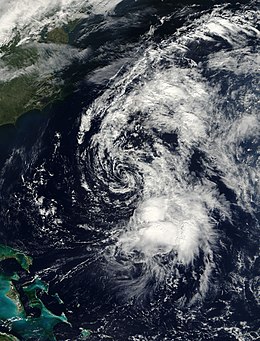라흐노스피라과
Lachnospiraceae| 라흐노스피라과 | |
|---|---|
| 과학적 분류 | |
| 도메인: | |
| 망울: | |
| 클래스: | |
| 순서: | |
| 패밀리: | 라흐노스피라과 레이니 2010[1] |
| 제네라[10] | |
| 아비시비르가[2] | |
라흐노스피라과는 다양한 식물성 다당류를[11] 단사슬 지방산(부티레이트, 아세테이트)과 알코올(에탄올)로 발효시키는 클로스트리디알의 순서에 따라 의무적으로 혐기성, 변동성 포자성형 박테리아 계열이다.이 박테리아는 루멘과[12] 인간의 내장 마이크로바이오타에서 가장 풍부한 세자에 속한다.[3][13][14][15]이 가족의 구성원들은 부티산을 생산함으로써 인간의 대장암으로부터 보호할 수 있다.[16][17]라흐노스피라과(lachnospirae)는 유전적으로 취약한(ob/ob) 무균 생쥐에서 당뇨병의 원인이 되는 것으로 밝혀졌다.[18]
참조
- ^ LPSN lpsn.dsmz.de
- ^ "Abyssivirga". www.uniprot.org.
- ^ a b c d e f g h i j k l m n 얼
- ^ "Agathobacter". www.uniprot.org.
- ^ "Cuneatibacter". www.uniprot.org.
- ^ Parker, Charles Thomas; Garrity, George M (1 January 2003). Parker, Charles Thomas; Garrity, George M (eds.). "Taxonomic Abstract for the genera". The NamesforLife Abstracts. doi:10.1601/tx.25197.
- ^ Parker, Charles Thomas; Garrity, George M (2017). Parker, Charles Thomas; Garrity, George M (eds.). "Nomenclature Abstract for Faecalicatena Sakamoto et al. 2016". The NamesforLife Abstracts. doi:10.1601/nm.29879.
- ^ Parker, Charles Thomas; Garrity, George M (2017). Parker, Charles Thomas; Garrity, George M (eds.). "Nomenclature Abstract for Faecalimonas Sakamoto et al. 2016". The NamesforLife Abstracts. doi:10.1601/nm.29877.
- ^ 유니프로트
- ^ "Family - L". List of Prokaryotic Names with Standing in Nomenclature. Retrieved 30 March 2021.
- ^ Boutard, M; Cerisy, T (13 November 2014). "Functional Diversity of Carbohydrate-Active Enzymes Enabling a Bacterium to Ferment Plant Biomass". PLOS Genetics. 10 (11): e1004773. doi:10.1371/journal.pgen.1004773. PMC 4230839. PMID 25393313.
- ^ Seshadri, R; Leahy, SC (19 March 2018). "Cultivation and sequencing of rumen microbiome members from the Hungate1000 Collection". Nature Biotechnology. 36 (4): 359–367. doi:10.1038/nbt.4110. PMC 6118326. PMID 29553575.
- ^ Phyllis Kanki; Darrell Jay Grimes, eds. (2013). Infectious diseases selected entries from the Encyclopedia of sustainability science and technology. New York: Springer. ISBN 978-1-4614-5719-0.
- ^ 유니프로트
- ^ Paul De Vos; et al., eds. (2009). Bergey's manual of systematic bacteriology (2nd ed.). Dordrecht: Springer. ISBN 978-0-387-68489-5.
- ^ Meehan, C. J.; Beiko, R. G. (12 March 2014). "A Phylogenomic View of Ecological Specialization in the Lachnospiraceae, a Family of Digestive Tract-Associated Bacteria". Genome Biology and Evolution. 6 (3): 703–713. doi:10.1093/gbe/evu050. PMC 3971600. PMID 24625961.
- ^ Xia, Li C.; Liu, Gang; Gao, Yingxin; Li, Xiaoxin; Pan, Hongfei; Ai, Dongmei (2019). "Identifying Gut Microbiota Associated With Colorectal Cancer Using a Zero-Inflated Lognormal Model". Frontiers in Microbiology. 10: 826. doi:10.3389/fmicb.2019.00826. ISSN 1664-302X. PMC 6491826. PMID 31068913.
- ^ Kameyama, Keishi; Itoh, Kikuji (2014). "Intestinal Colonization by a Lachnospiraceae Bacterium Contributes to the Development of Diabetes in Obese Mice". Microbes and Environments. 29 (4): 427–430. doi:10.1264/jsme2.ME14054. ISSN 1342-6311. PMC 4262368. PMID 25283478.
추가 읽기
| 위키스페아는 라흐노스피라과와 관련된 정보를 가지고 있다. |
- Newton, R. J.; VandeWalle, J. L.; Borchardt, M. A.; Gorelick, M. H.; McLellan, S. L. (29 July 2011). "Lachnospiraceae and Bacteroidales Alternative Fecal Indicators Reveal Chronic Human Sewage Contamination in an Urban Harbor". Applied and Environmental Microbiology. 77 (19): 6972–6981. Bibcode:2011ApEnM..77.6972N. doi:10.1128/AEM.05480-11. PMC 3187108. PMID 21803887.
- Kameyama, Keishi; Itoh, Kikuji (2014). "Intestinal Colonization by a Lachnospiraceae Bacterium Contributes to the Development of Diabetes in Obese Mice". Microbes and Environments. 29 (4): 427–430. doi:10.1264/jsme2.ME14054. PMC 4262368. PMID 25283478.
- Paul De Vos; et al., eds. (2009). Bergey's manual of systematic bacteriology (2nd ed.). Dordrecht: Springer. ISBN 978-0-387-68489-5.
- Almeida, edited by Susan S. Cho, Nelson (2012). Dietary fiber and health. Boca Raton: CRC Press. ISBN 978-1-4398-9929-8.
{{cite book}}:first1=일반 이름 포함(도움말) - Olsen, LeighAnne; Choffnes, Eileen R.; Academies, Alison Mack, rapporteurs ; Forum on Microbial Threats, Board on Global Health, Institute of Medicine of the National (2012). The social biology of microbial communities : workshop summary. Washington, D.C.: National Academies Press. ISBN 978-0-309-26432-7.
- Nelson, Karen E.; Peterson, editor ; foreword by Jane L.; Garges, Susan (2011). Metagenomics of the human body. New York: Springer. ISBN 978-1-4419-7089-3.
{{cite book}}:first2=일반 이름 포함(도움말)


